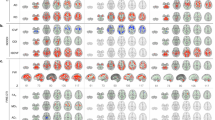Abstract
Background
One of the cardinal features in multiple system atrophy (MSA) is the white matter pathology: loss of myelin, astrocytosis, and glial cytoplasmic inclusions. The pathological changes of tissue microstructure can modify the diffusion behavior of water molecules, which can be assessed by diffusion tensor imaging (DTI).
Objectives
To explore the hypothesis of white matter degeneration in MSA.
Methods
We studied 11 patients with clinically probable MSA and 10 age–matched controls. DTI was performed in both groups to measure fractional anisotropy (FA) in various regions of interest: the inferior cerebellar peduncle (ICP), middle cerebellar peduncle (MCP), superior cerebellar peduncle (SCP), basis pontis, internal capsule, and corpus callosum.
Results
FA values in SCP and corpus callosum showed no significant difference between the MSA group and controls. By contrast, FA values decreased in the MSA group in the MCP, basis pontis and internal capsule. In addition, FA values in the MCP were negatively correlated with ataxia severity in the MSA group.
Conclusion
The areas showing decreased tissue anisotropy in DTI corresponded well with pathologically vulnerable areas in MSA. In addition, the local tissue anisotropy of MCP decreased in accordance with functional disability. These observations implied that DTI is a feasible method for in vivo evaluation of the white matter pathology in MSA.
Similar content being viewed by others
References
Gilman S, Low PA, Quinn N, Albanese A, Ben–Shlomo Y, Fowler CJ, Kaufmann H, Klockgether T, Lang AE, Lantos PL, Litvan I, Mathias CJ, Oliver E, Robertson D, Schatz I, Wenning GK (1999) Consensus statement on the diagnosis of multiple system atrophy. J Neurol Sci 163:94–98
Rapp MI, Kahn JE, Lantos PL (1989) Glial cytoplasmic inclusions in the CNS of patients with multiple system atrophy (striatonigral degeneration, olivopontocerebellar atrophy and Shy– Drager syndrome). J Neurol Sci 94:79–100
Graham DI, Lantos PL (2002) Greenfield’s Neuropathology. 7th edition. London: Arnold, pp 343–346
Basser PJ, Mattiello J, Lebihan D (1994) Estimation of the effective self–diffusion tensor from the NMR spin echo. J Magn Reson B 103:247–254
Basser PJ, Pierpaoli C (1996) Microstructural and physiological features of tissues elucidated by quantitativediffusion– tensor MRI. J Magn Reson B 111:209–219
Basser PJ, Pierpaoli C (1996) Toward a quantitative assessment of diffusion anisotropy. J Magn Reson B 111: 209–219
Ciccarelli O, Werring DJ, Barker GJ, Griffin CM, Wheeler–Kingshott CA, Miller DH, Thompson AJ (2003) A study of the mechanisms of normalappearing white matter damage in multiple sclerosis using diffusion tensor imaging. Evidence ofWallerian degeneration. J Neurol 250:287–292
Toosy AT, Werring DJ, Orrell RW, Howard RS, King MD, Barker GJ, Miller DH, Thompson AJ (2003) Diffusion tensor imaging detects corticospinal tract involvement at multiple levels in amyotrophic lateral sclerosis. J Neurol Neurosurg Psychiatry 74:1250–1257
Trouillas P, Takayanagi T, Hallett M, Currier RD, Subramony SH, Wessel K, Bryer A, Diener HC, Massaquoi S, Gomez CM, Coutinho P, Ben Hamida M, Campanella G, Filla A, Schut L, Timann D, Honnorat J, Nighoghosian N, Manyam B (1997) International ataxia cooperative ataxia rating scale for pharmacological assessment of the cerebellar syndrome. J Neurol Sci 145:205–211
Inoue M, Yagishita S, Ryo M, Hasegawa K, Amano N, Matsushita M (1997) The distribution and dynamic density of oligodendroglial cytoplasmic inclusions (GCIs) in multiple system atrophy: a correlation between the density of GCIs and the degree of involvement of striatonigral and olivopontocerebellar systems. Acta Neuropathol (Berl) 93:585–591
Tsuchiya K, Ozawa E, Haga C, Watabiki S, Ikeda M, Sano M, Ooe K, Taki K, Ikeda K (2000) Constant involvement of the Betz cells and pyramidal tract in multiple system atrophy: a clinicopathological study of seven autopsy cases. Acta Neuropathol (Berl) 99:658–636
Lantos PL, Rapp MI (1994) The distribution of oligodendroglial inclusions in multiple system atrophy and its relevance to clinical symptomatology. Brain 117:235–243
Braak H, Rub U, Tredici KD (2003) Involvement of precerebellar nuclei in multiple system atrophy. Neuropathol Appl Neurobiol 29:60–76
Watanabe H, Saito Y, Terao S, Ando T, Kachi T, Mulai E, Aiba I, Abe Y, Tamakoshi A, Doyu M, Hirayama M, Sobue G (2002) Progression and prognosis in multiple system atrophy. An analysis of 230 Japanese patients. Brain 125:1070–1083
Trison F, Yekhlef F, Balestre E, Chrysostome V, Quinn N, Wenning GK, Poewe W (2002) Application of international cooperative ataxia rating scale rating in multiple system atrophy. Mov Disord 17:1248–1254
Mitsui Y, Tanaka H, Nakamura Y, Yagi Y, Takahashi M (1996) Neuroradiological findings of sporadic olivopontocerebellar atrophy with marked laterality and degenerative changes in the corticospinal tract. Clin Neurol 36:1150–1154
Watanabe H, Fukatsu H, Katsuno M, Sugiura M, Hamada K, Okada Y, Hirayama M, Ishigaki T, Sobue G (2004) Multiple regional 1H–MR spectroscopy in multiple system atrophy: NAA/Cr reduction in pontine base as a valuable diagnostic marker. J Neurol Neurosurg Psychiatry 75:103–109
Naka H, Imon Y, Ohshita T, Honjo K, Kitamura T, Miyachi T, Katayama S, Mimori Y, Nakamura S (2002) Magnetization transfer measurements of brain structures in patients with multiple system atrophy. NeuroImage 17:1572–1578
Specht K, Minnerop M, Abele M, Ruel J, Wüllner U, Klockgether T (2003) In vivo voxel–based morphometry in multiple system atrophy of cerebellar type. Arch Neurol 60:1431–1435
Author information
Authors and Affiliations
Corresponding author
Additional information
This work was supported by funds from the Japanese Ministry of Education, Science and Technology (Grant number 14770295).
Rights and permissions
About this article
Cite this article
Shiga, K., Yamada, K., Yoshikawa, K. et al. Local tissue anisotropy decreases in cerebellopetal fibers and pyramidal tract in multiple system atrophy. J Neurol 252, 589–596 (2005). https://doi.org/10.1007/s00415-005-0708-0
Received:
Revised:
Accepted:
Published:
Issue Date:
DOI: https://doi.org/10.1007/s00415-005-0708-0




